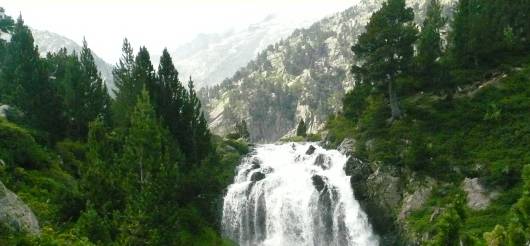A watershed is the geographical area drained by a watercourse. The concept applies at various scales – from, for example, a farm drained by a creek (a “micro-watershed”) to a large river basin (or a lake basin). A river basin usually comprises a complex system of watersheds and micro-watersheds crossed by and draining into a major river and its tributaries, from the beginning of the river (its “source”) to its mouth (and a lake basin may be defined as a geographic land area draining into a lake). Because soils and vegetation are intimately linked to the water cycle, watersheds are the most useful planning unit for integrated water and land resource management.
Watersheds perform the following important functions and services, among others:
- the provision of freshwater (particularly upland watersheds);
- the regulation of water flow;
- the maintenance of water quality;
- the provision and protection of natural resources for local livelihoods;
- protection against natural hazards (e.g. local floods and landslides);
- the provision of energy (e.g. hydropower);
- biodiversity conservation; and
- recreation.
Forests and trees play crucial roles in hydrological processes in watersheds. Forested mountain and upland watersheds supply an estimated 70 percent of the world’s accessible freshwater resources for domestic, agricultural, industrial and ecological needs. The modules on Forests and Water and Mountain Forests provide more discussion on the interactions between forest vegetation and hydrological processes on sloping land.
Watershed services and functions may be threatened by deforestation, uncontrolled timber harvesting, changes in farming systems, overgrazing, roads and road construction, pollution, and the invasion of alien plants. They may also be affected by natural disturbances such as wildfires, windstorms and disease. The deterioration of watershed functions has significant negative impacts, potentially leading to erosion and the depletion of soil productivity; the sedimentation of watercourses, reservoirs and coasts; increased runoff and flash flooding; reduced infiltration to groundwater; reduced water quality; and the loss of aquatic habitat and biodiversity.
Watershed management, defined as any human action aimed at ensuring the sustainable use of natural resources in a watershed, attempts to provide solutions to these threats. The origin of watershed management is closely linked to forestry; for example, the uncontrolled removal of forests in Europe and North America before the 1950s created significant changes in the hydrological regimes of important watersheds, leading to accelerated erosion and hazards downstream. The recognition of this relationship between upstream land use and water yields and quality led to the development of watershed management concepts. Watershed management considers the management and conservation of all available natural resources in a comprehensive way. It provides a framework for integrating different land-use and livelihood systems (e.g. forestry, pasture and agriculture), using water as the “entry point” in the design of interventions. Watershed management aims to preserve the range of environmental services – especially hydrological services – provided by a watershed and to reduce or avoid negative downstream impacts while, at the same time, enhancing resource productivity and improving local livelihoods.
Watersheds should be understood as dynamic systems characterized by diverse interactions and spatial relations between humans and the environment that manifest as mosaics of different land-use systems. The socioeconomic, cultural and environmental relationships, flows and conflicts between the upper and lower parts of a watershed are called upstream–downstream linkages. The consideration of these linkages is one of the key principles of watershed management. Other key principles are:
- addressing the root causes and drivers of environmental degradation (instead of treating symptoms);
- planning in an iterative process involving cycles of analysis, plan formulation, implementation and evaluation that allows for continuous learning and adjustments;
- working across sectors, with all stakeholder groups and administrative levels, thereby integrating bottom-up and top-down aspects; and
- combining local and scientific knowledge.
The demand for watershed services and the recognition that these services have economic value are growing globally. Increasingly, schemes are being created whereby downstream water users compensate upstream watershed managers for management that ensures the provision of environmental services, such as clean water.



